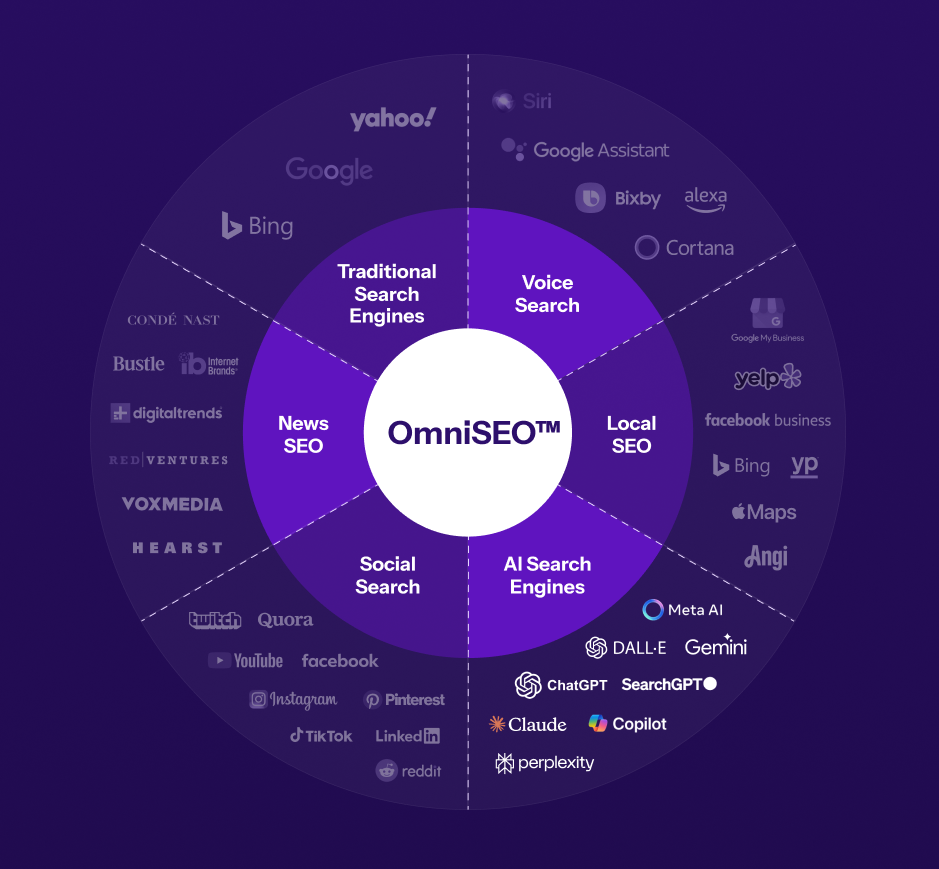
Niresh Bandaranayake
Generative Engine Optimization (GEO) is quickly becoming a key focus in digital strategy as AI-powered search tools change how people find information online. In the past, online discovery meant typing keywords into Google and scrolling through links, but today users are increasingly asking questions on AI chatbots, voice assistants, and new search experiences that deliver direct answers. This shift to AI-generated answers, via tools like Google’s Search Generative Experience (SGE), ChatGPT, Bing Chat, and others, have created a “search everywhere” landscape where discovery is no longer confined to traditional search engine results pages. This article explains what GEO is, why it matters, and how it compares to traditional SEO.

Source: SEO.com
GEO is the practice of creating and optimizing your content so that it appears in AI-generated answers on platforms like Google’s generative search results (SGE), ChatGPT, Bing’s chat, Perplexity, and other AI-driven engines. In essence, it’s about ensuring that when an AI system answers a question in your niche, it includes your brand or insights as part of the response. Achieving this involves more than just using the right keywords. GEO is a holistic approach that includes structuring content for AI comprehension, publishing in the right places, and building the credibility signals that AI models look for.
For example, it means formatting content with clear headings, lists, and concise answers so an AI can easily extract key points. It also means earning positive brand mentions and citations across the web (even without direct backlinks) so that AI trusts your content as authoritative. Unlike traditional SEO which focuses on getting a click to your website, GEO focuses on shaping the conversation itself – your content should be able to be quoted or summarized directly in an AI’s response. In short, GEO aims to make your brand the answer, not just a search result.
(Note: You might also hear terms like Answer Engine Optimization (AEO) or AI Optimization (AIO) used interchangeably with GEO. All refer to the same emerging challenge of optimizing content for answer-generating platforms.)
Traditional search engines still drive a majority of web traffic, but the balance is shifting fast. Users are embracing AI-powered tools for convenience and richer answers. Here are a few key trends behind this shift:
The implication is clear: a growing portion of your audience could soon be finding answers without ever clicking a traditional search result. If your content isn’t optimized for AI discovery, those users won’t hear about your brand at all. GEO matters because it ensures your brand stays visible as these new search behaviors expand. It’s about adapting now so that you remain the trusted answer when customers ask questions on any platform, whether it’s a search engine or an AI assistant.
GEO doesn’t mean throwing out your SEO playbook – rather, it extends and reframes it for the AI era. In many ways, “good GEO is also generally good SEO”, because both rely on the same foundation of high-quality, accessible content. If you’ve invested in solid SEO practices, you’re already much of the way there. That said, GEO does introduce new priorities and tactics. Here’s how GEO and traditional SEO stack up on key points:
Despite these differences, GEO and SEO are fundamentally connected. GEO isn’t a replacement for SEO, but a natural extension of it. The core principles of creating valuable content and maintaining a healthy website remain paramount. If you’ve been doing SEO well – publishing helpful content, using proper schema, earning quality links and mentions – you’re already on the right track for GEO. The main shift is being mindful that your content needs to shine on new surfaces, not just search results pages. Your aim is still to serve users’ needs – GEO simply ensures your brand’s answers are visible in the channels where users are now looking, from Google to chatbots.
The rise of generative AI in search is reshaping how people discover information, and Generative Engine Optimization has emerged as a crucial strategy in response. GEO is about making sure your brand remains visible and relevant when answers are being generated by AI – not just when pages are being ranked by Google. By understanding GEO’s core concepts and how it builds on your SEO foundation, you can start adapting your content strategy to this new landscape. In practice, that means continuing to create excellent, user-focused content and keeping your site technically sound, while also structuring your information and online presence so that AI-driven systems find it trustworthy and easy to use. Brands that embrace GEO can gain an edge, securing their spot as the trusted answer provider in their field. As we move forward, optimizing for both humans and the AI tools they use will become standard practice – and those who start aligning their SEO efforts with generative engines now will be the ones to capture the next generation of searchers.